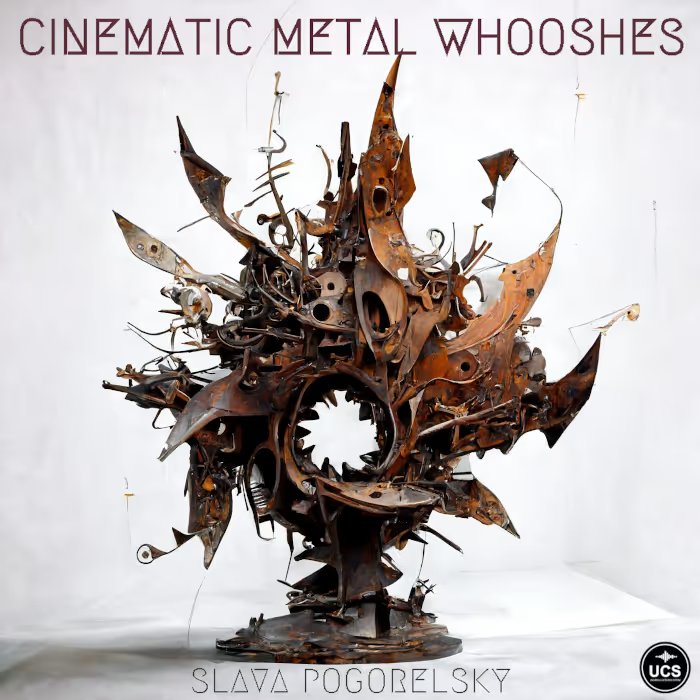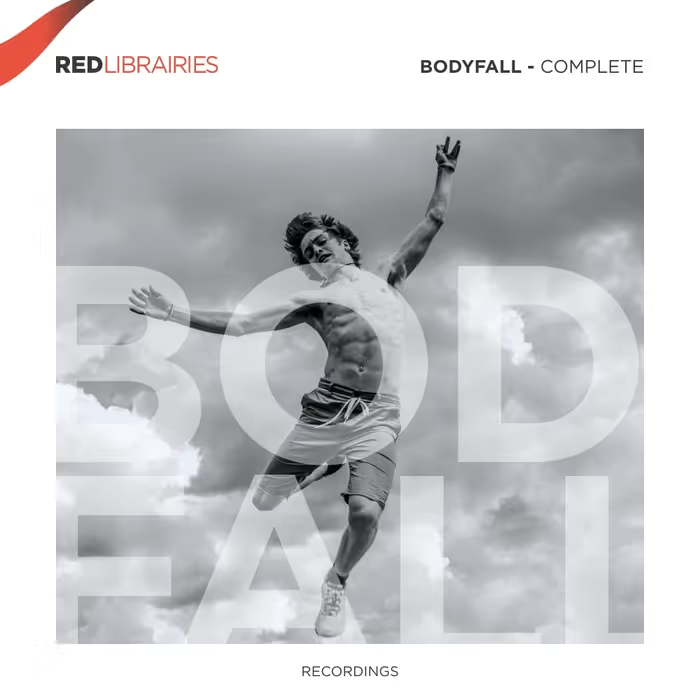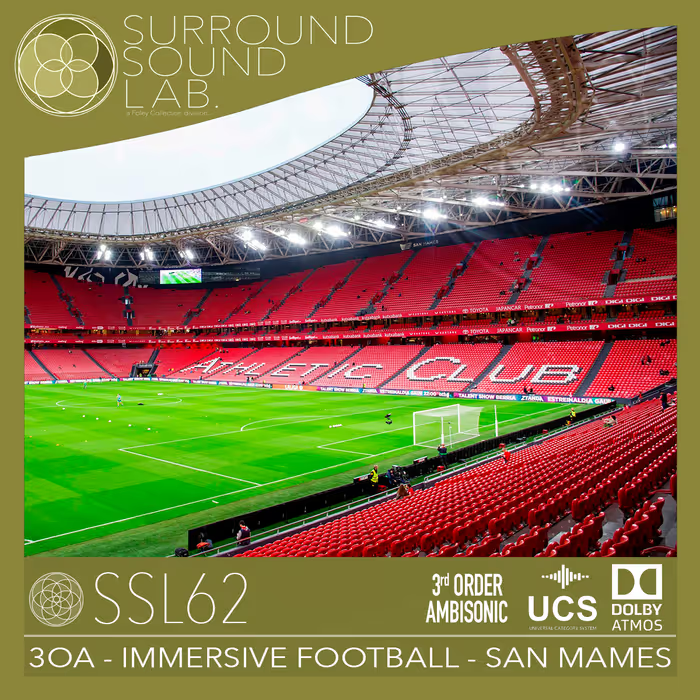Without further ado, here’s Jennifer Walden’s interview with Peter Brown – covering everything from that Star Trek sound, the sound of alien worlds, to crazy sci-fi sound design experiments (and beyond):
Note: May contain minor spoilers – and most definitely contains sci-fi!
The trailer for Star Trek Beyond
Star Trek Beyond – the title implies a journey into realms unexplored by the previous Star Trek films in this reboot series, which started with the J.J. Abrams’ directed film Star Trek in 2009. That film established an alternate reality in which the subsequent films, Star Trek Into Darkness and Beyond, are also set. In Beyond, the USS Enterprise is attacked by a swarm of alien spaceships, forcing the crew to abandon it. They crash-land, in separate groups, on an alien planet. The crew must find each other, find a way to overcome the hostile aliens, and find a way home.
Not only does Star Trek Beyond present a new location with a new alien race, but it also delivers a new directorial style. Although Abrams successfully resurrected the Star Trek franchise in 2009, it’s director Justin Lin who is at the wheel on this one. His years of experience on The Fast and The Furious franchise propel Beyond away from the blackhole that Star Trek Into Darkness somehow became.
Another change to the reboot series is the post sound team, now led by supervising sound editor/sound designer Peter Brown at Formosa Group in West Hollywood, CA. Brown is also a Fast and Furious alumni, having started with Director Lin on The Fast and the Furious: Tokyo Drift.
Under the direction of Lin, Brown and his sound team take this iconic franchise for a spin while still staying within the established Star Trek boundaries.
Star Trek Beyond operates in the alternate reality of Star Trek (2009), and it takes the audience to a new alien planet. How did these two parameters impact your sound design? What liberties were you able to take with the sound?
It was a sound designer’s dream working on this project because of the limitations and the world that has been set up. You have this perfect storm of being able to do anything you can imagine because it is science fiction and we go to new worlds and meet new characters. Literally, the sky is wide open for experimentation. But on the other hand, there is this huge backbone of historical work that goes back 50 years that you can dip into, reproduce entirely, or just riff off of. It’s an amazing thing which I think is helped by the alternate reality aspect of it.
It was a sound designer’s dream working on this project because of the limitations and the world that has been set up
If we were strictly continuing the original Star Trek series then you’d probably have to stick to what was established a little more rigidly. Although, they didn’t even do that so rigidly in the original Star Trek movies with the original cast. Everyone who’s worked on the films has put their own spin on things, like the transporter for example. The transporter never really sounds the same twice but it always has that same DNA from 1967. You always know the transporter sound even though each film presents it a little bit differently, both visually and sonically.
Did you inherit any sounds from the two previous films in this reboot series?
Yes, in the sense that the work that is done on the films gets handed down as legacy material. Mark Stoeckinger, who sound supervised the 2009 J.J. Abrams film Star Trek, has an office right next to mine. We will be co-supervising Fast 8 this spring. We work with a lot of the same editors and designers so there was a ton of cross-fertilization here, and collaboration. If I had a question about something I could just pop up from my desk and go over and ask Mark, “Hey, what were you guys thinking when you did this?” Or, “Does this sound right in J.J.’s Star Trek world? Or is it going too far?” It’s a small town of sound people I guess.
The sounds that you went back and referenced, were they the more iconic sounds, like the transporter sound or the sound of the bridge on The Enterprise?
So, The Enterprise bridge has a certain sound that people and Trekkies know. And so if we had come up with something completely new I think that would’ve been wrong. And if we had stuck with 1967 sounds, then that would have sounded weird.
One of the most exciting things about this project was that our names might be on it – but really it’s a collaboration of great sound men and women working on this series over the years
Also, if we had just stuck with what Mark and his crew did on the 2009 Enterprise, then that would’ve been boring and regurgitated. One of the most exciting things about this project was that our names might be on it – but really it’s a collaboration of great sound men and women working on this series over the years and having fun with the science fiction genre and with these characters. It’s a real honor to be part of that collaboration.
Let’s talk about some of the new sounds on Star Trek Beyond. Can you tell me about the sound direction that you took for the alien tech and weaponry in this film?
Justin [Lin], the director, had some pretty clear ideas about how this alien culture would differ from the Federation. The two are fundamental enemies and that was to be expressed in the technology that they have. The Federation has the newest, the shiniest, and the most high-tech equipment in the universe. But this alien race’s tech is more retrofitted, mechanical, and maybe a little bit clunky like a bucket of bolts that could fall apart. And so if we presented sounds for the aliens that were too sleek, too fast, or too powerful than Justin would have us go back and pull out elements that were too high-tech and instead add in more mechanical elements. That was the direction that he was pushing us in. He wanted to make sure that they had a very different sound from the Federation’s technology.
Can you give some examples of specific elements that you used for the alien tech?
We used old-school gears, like a large iron gear that has a little flipper and it only moves in one direction – a ratchet that goes tink-tink-tink-tink-tink. So we used some of those gear mechanisms for the biomechanical metal suits. Justin [Lin] wanted that to be living, alive, something part of their skin. The suit was Krall [played by Idris Elba]. Justin’s note was, “Like the cables on the Golden Gate Bridge.” That was always a little bit of a mystery to me. So we started working with steel wire, like wire brushes, which make a prickly sound if you brush them against something. So that is how we tried to articulate the fibers and the muscles in our bad guy Krall.
We also used chain and metal plate as much as possible, just using hunks of metal in a mechanical fashion. Metal was part of this whole culture of this alien race. They were miners and so everything we tried to springboard from drills, metal, bits and pieces of metal, anything that would come out of a huge mining operation – if you could craft that into an alien race.
How did you build the backgrounds for the alien planet?
That was a funny process because at the beginning most of the notes said, “Make it quiet, empty.” So you go through a cycle of taking all of the elements out and then it feels like it is only wind. It’s too empty and plain. And so you start adding elements back in. At first we had very few creatures but as we kept on working on it more and more creatures would pop up on the planet.
it would be a jungle scene one day and then the next day there would be 1,000,000 tiny little floating puffballs going through it, or some insect forms
The visual effects team was hustling along as we were doing our process. So it would be a jungle scene one day and then the next day there would be 1,000,000 tiny little floating puffballs going through it, or some insect forms. It’s amazing how the whole planet came to life layer by layer as the visual effects folks do their magic
We used human screaming to design the creatures. Sound designer Eliot Connors is an insane designer and creator of new sounds. He worked really hard both on the alien mech tech and in using his voice to create strange new alien callouts. We got into using bird calls too, like duck calls and elk calls, things that you can buy from specialty hunting stores. I had some recordings that I captured in Joshua Tree from 1996, of sounds bouncing off the rocks at night during a Halloween party there. I slowed these recordings down and got some strange, eerie, echoy little shouts and noises that were human oriented. So there is this old recording that has now made its way onto this alien planet’s surface.
Who are your sound designers on the film?
Eliot Connors and Stephen Robinson, both from the Formosa Group, were the two main sound designers on the film. Steve [Robinson] and I have been working together for over a decade. He’s pretty much God’s gift to sound.
The task of crafting aliens, robots, and transformations was really a gift for all of us
And Eliot is a new kid who spent a lot of time in interactive. He is very creature oriented. He loves making up the creatures. The task of crafting aliens, robots, and transformations was really a gift for all of us. It was fun to have these types of challenges.
This alien planet, is that where the mining aspect comes from?
Correct. There was an ancient race that spent a lot of time mining on the planet. So that ancient race left its entire mining infrastructure on the planet, and that’s there when our villain Krall gets there and repurposes it. So Justin’s ideas related to that, and he was very thoughtful of the history of this planet and of all the materials that would be available. Even if none of that is particularly well explained in the film, Justin very strictly follows the logic of the back story that was in the screenwriters’ minds. That’s really helpful for sound when you’re trying to make something that is a cohesive whole.
Was this film natively mixed in Atmos?
Yes. I have worked with Frank A. Montaño and Jon Taylor over at Universal Studios on many films, and they are absolute geniuses. This is the first one where we changed format and mixed in native Atmos on their stage. They have mixed natively in Atmos before but this was a little new for us and it worked out extremely well. It gave us new flexibility. We were able to make the film in Atmos, churn out a lot of different versions and formats quickly when it came time for delivery, and still retain a lot of flexibility with the tracks in spite of how many tracks there were and how many late visual effects changes were coming in.
As you were designing the sound, were you keeping the Atmos surround field in mind? Did that impact any of your sound design?
It wouldn’t necessarily impact the sound design; it would impact how it was implemented or how it was placed in the room. You are still dealing with the same theatrical environment but now you have speakers in different places. It really impacts us in how we prepare the sound and where we put things. So for example, in the scene with the swarm ships, we knew that if we put millions of these little spaceships all over the place it wouldn’t work. We couldn’t stuff all of them into the Atmos speakers if we wanted it to be noticeable and have an impact. So we would take our favorite sounds, the swarm ships that we thought were the best players that really standout sounds, and use those in the Atmos surround field.
The majority of the film is built in the 7.1 environment because we have to take this native Atmos mix and down-mix that to 7.1, 5.1, and two-track.
In order to make the Atmos mix a little different, to make it pop, we try to save our very best sounds for the appropriate moments, like when something goes over the top of the screen
Those are how most viewers will experience the film. In order to make the Atmos mix a little different, to make it pop, we try to save our very best sounds for the appropriate moments, like when something goes over the top of the screen. We put those sounds in the overheads so that it is a little sonic treat for the Atmos listeners. This film was so awesome for a native Atmos mix. Sci-fi is where it’s at because things disappear off the top of the screen. Things go up over your head in science fiction films with a frequency that is not found in other films. In space, it is truly a 360-degree environment and we really try to capitalize on that. It was easy because the film lends itself to that.
Did you have a favorite scene for sound design in the Atmos mix?
In reel 2, the big attack of the swarm on The Enterprise. That has a little bit of everything. The ships are coming from all around; the audience is totally surrounded. We just need speakers in the floor soon. So The Enterprise takedown scene is nice. My favorite scene is probably the U.S.S. Franklin drop scene, near the end of the film, which involves trade secrets of the film so I won’t talk about that too much. It sort of involves jumpstarting the spaceship. It’s a scene that I feel Justin designed especially to be a sound moment. He usually throws us a bone in each film somewhere, a scene in which he just says, “Go crazy. This is your time to shine.” It’s a great scene. What more could a sound guy want?
For you, what was unique about the sound on Star Trek Beyond?
My approach to sound has always been from an organic standpoint, to be as organic as possible. Find out what is in the film, go out in the world and record it, and then bring those sounds back into the lab and fashion them into a realistic or hyper-realistic soundtrack. In science fiction, I found that – outside of creature vocals and some of the other things we talked about like the mechanical sounds for the alien ship and the bad guys armor, all the sounds for the lasers, spaceship engines, some types of explosions, beeps, technology, computers, and all of those things were not to be found in the real world as much as they were to be found inside an oscillator in the computer. So our recording lab was in our offices for the first time.
For this film, I had the opportunity to start using and learning some of the tools that are available specifically for this type of sci-fi design
There’s a lot of creative work using sound designing tools that, in some cases, I have had for years and haven’t really found much use for. But for this film, I had the opportunity to start using and learning some of the tools that are available specifically for this type of sci-fi design. That was a lot of fun, to be able to create sounds right in the computer. To create sounds that for most of the stuff I work on would be thrown out immediately by the filmmakers saying that it sounds to synthetic or too sci-fi. So that’s part of the thrill that I was talking about earlier. We were using a whole different set of tools.
What were some of the programs that you worked with?
We used a lot of tools from Native Instruments, like Massive which was really helpful for lasers. Kontakt was great for sequencing different sounds from lasers to the swarm ships. Reaktor was fantastic for flybys and explosions. Some of Twisted Tools add-ons for Native Instruments, like Whoosh and S-Layer, are just fantastic programs. I can’t say enough good things about those folks. Slapper from Maggot Software was super useful in some of our canyon scenes. We spent a ton of time working with sound programs and plug-ins that just don’t have much use in the rest of the motion picture world.
Maybe now, with this immersive study, we will find more uses for them. We used a couple of bizarro tools like a Talk Box by Dunlop Heil and an electric guitar.
There was a lot of experimentation and throwing away things that didn’t work. But that’s the fun part of the process
We tried everything. We tried recording wires and springs through these tools. Most of that stuff we actually abandoned but we did try to go with the old school approach of using slinkies for lasers. Some of it had some merit but most of it was abandoned. There was a lot of experimentation and throwing away things that didn’t work. But that’s the fun part of the process. I can’t tell you how much fun it was. It really was a fantastic opportunity. Visually, the film is off the hook with what they’ve done. It’s really amazing.






